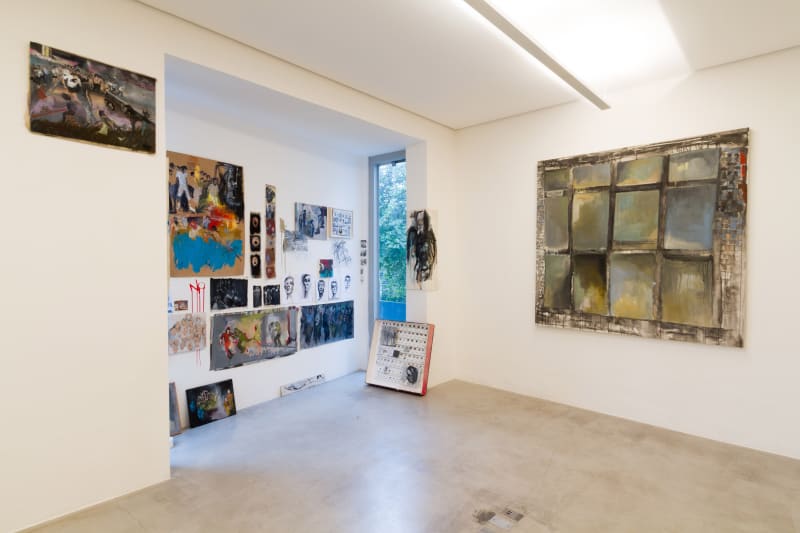Shards, rocks, surfaces
The generously sized and intensely chromatic paintings of Myriam Zini, presented in her first solo exhibition, Lacrimogêneo [Lacrimatory], as part of the Zip'Up project, offer no room for half-measure readings. The viewer either admires them or rejects them with equal force. In general terms, her fertile production can be interpreted as an attempt to poeticise the maximised circulation of images and information through diverse sources, within a broadened scope of that which was once known as mass media, and also as the production of works grounded in the pictorial tradition of contemporary art, the subgenres of which might be dubbed as bad painting, free painting, expanded painting or the like.
In works from the series like Caminho das Pedras [Path of Rocks], which draw on photographs published in newspapers and magazines about São Paulo's Cracolândia (literally, Crack Land) and its eternally tormenting situation, and Lacrimogêneo [Lacrimatory], which use images of protests from around the world, also exhaustively published in various channels - the conspicuous demonstrations of June 2013 and the Black Bloc being shown on the news, for example, generate a curious relevance for the series - the Morocco-born French artist who now lives in Brazil exhibits an unquestionable ability to compose eye-catching scenery. In these times of hyper-exposure, scenery is a suitable term, as nowadays almost everything is about performing, representing and being seen.
Amid the streaks running down the surface of the canvas, the colour zones positioned to define shapes and volumes - a blue and white cap from one painting is a fine example - the rather disorderly junction between the initially thought idea and the assimilated accidents in the work and the oscillations between more incomplete compositions or those strongly united by accumulated and overlapping elements, Zini creates a corpus of seductive pieces, especially to those familiar with such distinctive artists as Daniel Richter and Annette Messager, for example. The ease with which the artist moves from large-framed paintings to works also in paint but mounted on small, discarded and less obvious surfaces, like pieces of wood, slats and tiles, as well as second-hand paper, from newspapers and magazines, for instance, also brings a refreshing and unpretentious feel that relates the oeuvre not only to painting, but also drawing and assemblage. The material characteristic of the brushstrokes and of the gestural dimension over such surfaces even refers to a three-dimensional desire.
One interesting observation that emerges when analysing the entire set is how chaos and disorder in the world, long portrayed in vast works, from Brueghel to web art, has gained a dominant standardisation by means of photojournalism and advertising, for example. In Zini's paintings, one can see how the photographs published in printed media follow more or less obvious, not particularly moving compositions that lean on clichés that comfort and calm the average observer's eye. In one of the artist's previous series based on commercials for sports goods, advertising reveals its far from transgressive nature, repeating acclaimed visual formulae. Thus, there is the need for Zini, as an author who reshapes herself from such signs and blends them without univocal meanings, to overlap, build up, scrape, imprint and extract elements from the painting.
The plastic-visual chaos that runs through the artist's work can cause a more political reading of such pieces, as comment on fragmented and superficial times. The need for the artist to intervene from this broth of images and information spewed into our everyday lives, however, is not only related to our being aware of the alienation, fear of the other, social exclusion and gentrification, for example. Myriam Zini's substantial oeuvre launches us into the 'eye of the storm' of these days constantly declared as "of transition", and, with visual force, ratifies our ephemeral and finite condition.
Mario Gioia, 2013

